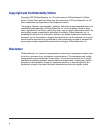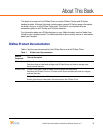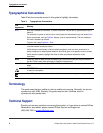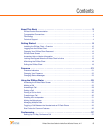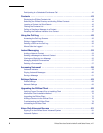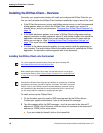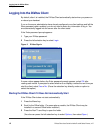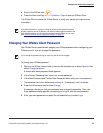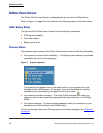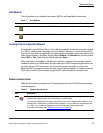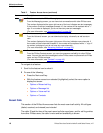
Typographical Conventions
About This Book
DiVitas Client User Guide for Nokia E and N Series Phones, v2.7
4
Typographical Conventions
Table 2 lists the conventions used in this guide to highlight information.
Terminology
This guide uses the term cellular to refer to mobile voice service. Generally, the term is
synonymous with GSM. Similarly, this guide uses the term CellData, which is
synonymous with packet data.
Technical Support
Should you have any questions concerning this product, or if you desire to contact DiVitas
Networks for any reason, please contact DiVitas Service and Support at:
(650) 625-1900 or support@divitas.com
.
Table 2. Typographical Conventions
Text
Appearance
Meaning
Blue Blue text indicates a command. To use a command, use the left or right selection key to
select it.
For example, to place an active call on hold, press the left selection key and select Hold.
Some commands, such as Options, display a list of subcommands. The text indicates
this with a bracket, as follows:
To end a call, select Options > End.
Italics Italics are used to indicate a value you must supply. Bold is used to indicate text that
must be entered exactly as shown.
Italics also are occasionally used to indicate emphasis, such as when a new term is
being introduced or when special attention should be given to a specific word or phrase.
Italics also are used to highlight the titles of other documents referred to in this
document.
Bold Generally, bold is used to show characters you must enter exactly as they are shown in
the text. Bold is also used sparingly to highlight important text.
Blue underline Blue, underlined text indicates a URL link. You can click on the link to access the web
page.
CAUTION! This icon and the bold text next to it call attention to the potential for data loss
or service interruption.
Note. This icon and the text next to it call attention to important supplementary details.




